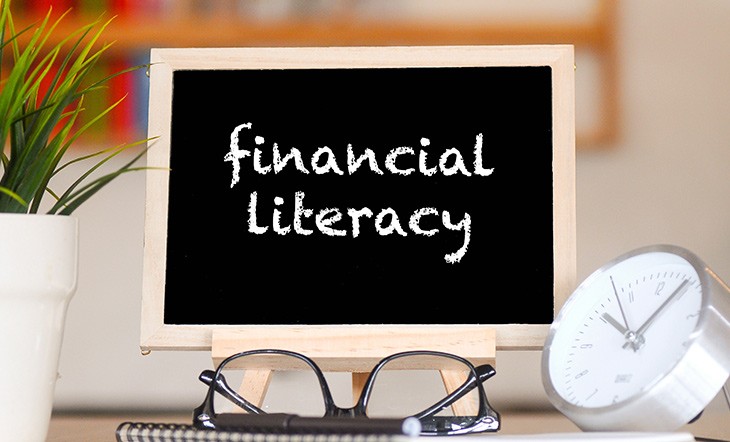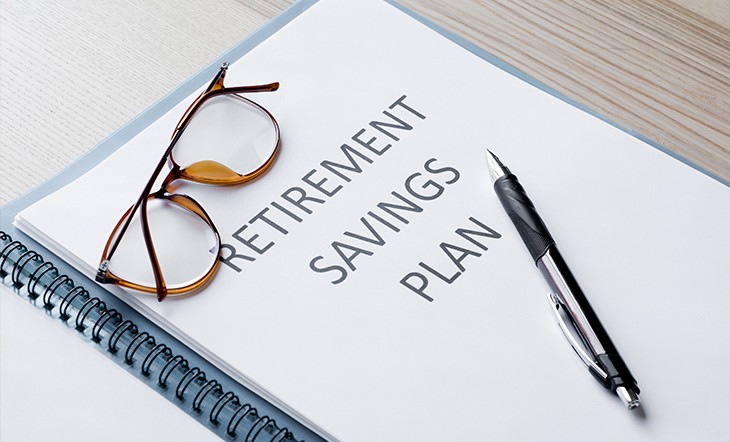Ten Low-Risk Retirement Portfolio Strategies

Retirement today looks very different from what it did a generation ago. Pensions are rare, Social Security covers only part of the picture, and market volatility often seems sharper just as many professionals are preparing to leave the workforce. For someone who has spent decades building wealth, the fear of losing money in a downturn and running out of options when the paycheck stops is all too real.
The challenge you face is that you can’t afford to be reckless, but moving everything into cash or ultra-safe bonds isn’t the answer either. Inflation, longevity, and healthcare costs will chip away at that safety net. The real task is to attain a balance. You need to protect your principal, generate a reliable income, and still leave enough growth to keep up with rising costs.
And to do that, you need low-risk retirement portfolio strategies. It’d be untrue to say that these strategies will eliminate risk completely. However, they can help manage it if you play your cards right. Done well, they create resilience — a portfolio that withers market shocks without derailing your plans — and one that allows you to enjoy retirement with confidence, rather than constant anxiety.
This article outlines ten such strategies, each grounded in risk management principles and informed by tested approaches. These strategies are designed for professionals who want actionable, evidence-based ways to safeguard what they’ve built.
But what do we mean by “low-risk” in retirement?
“Low-risk” is not the same as “no risk.” In retirement, your goal is to:
- Preserve capital to cover essential living expenses over a long retirement horizon.
- Mitigate downside risks during market downturns, particularly in the early stages of retirement.
- Generate income that keeps up reasonably with inflation.
- Avoid surprises: medical bills, long-term care, tax changes, market shocks.
These goals shape the retirement portfolio risk management strategies that should be prioritized. They explain why some traditional ideas (all bonds, ultra-conservative investments) may appear safer but are vulnerable to inflation, longevity, or sequence-of-returns risk.
Below are ten low-risk retirement portfolio strategies that can be used to build a resilient portfolio:
1. Tilt toward high-quality fixed income and inflation-protected securities
Consider allocating a portion of your portfolio to U.S. Treasuries, municipal bonds, or investment-grade corporate bonds. These instruments offer stability and a predictable income. To guard against the steady rise in prices, consider adding inflation-linked securities, such as TIPS (Treasury Inflation-Protected Securities) or inflation-indexed annuities. Together, they provide a foundation of safety without sacrificing growth entirely.
Why it works: High-quality fixed income dampens volatility and provides contractually defined interest payments, something equities can’t promise. Inflation-protected assets, meanwhile, help preserve the real value of your dollars over time, addressing one of the biggest threats in retirement.
What to watch for: Returns are typically lower than equities, and bond prices can fall when interest rates rise. Inflation-protected products may also come at a higher cost, so they work best as part of a balanced mix rather than the entire portfolio.
2. Build a bond ladder with staggered maturities
Instead of buying a single bond or locking all your money into one maturity, spread your purchases across different time horizons, such as one, three, five, and ten years. As each “rung” matures, reinvest at prevailing rates, keeping the ladder intact.
Why it works: This structure cushions you from the risk of having to reinvest everything when rates are low. It smooths out cash flow, provides a steady stream of income, and reduces sensitivity to interest rate swings.
What to watch for: Building an effective ladder requires enough capital to diversify across rungs. Shorter maturities typically yield less, while longer ones carry more price risk if you need to sell early.
3. Apply the bucket strategy for withdrawals
Segment your retirement savings into three distinct buckets based on when you’ll need the money:
- Bucket 1: Cash or near-cash for the next 1 to 3 years of expenses.
- Bucket 2: Bonds or conservative income funds for years 4 to 8.
- Bucket 3: Growth-oriented assets such as dividend-paying equities to cover later retirement years.
Periodically refill and rebalance the buckets to maintain the structure's integrity.
Why it works: By drawing from the short-term bucket during downturns, you avoid liquidating stocks at depressed prices. This helps control sequence-of-returns risk and ensures your growth assets have time to recover.
What to watch for: Buckets require discipline and consistent upkeep. Neglecting to refill them after strong years can erode the strategy’s effectiveness.
4. Maintain exposure to dividend-paying stocks
Even in a low-risk portfolio, equities have a role. Favor companies with strong balance sheets, reliable cash flows, and consistent dividend histories. Consider dividend-growth stocks, which can increase payouts over time.
Why it works: Equities offer the growth potential needed to stay ahead of inflation. Dividends provide steady income, while reinvested dividends compound long-term returns. This combination often outperforms fixed income alone.
What to watch for: Dividends are not guaranteed. Companies can cut or suspend them during stress. Stock prices remain volatile, so equity exposure should be balanced and sized appropriately for your overall risk tolerance.
5. Consider annuities or exactly-timed income guarantees
Annuities can serve as a safety net when you want income you cannot outlive.
- Fixed immediate annuity: Starts paying guaranteed income right after purchase, replacing a portion of your paycheck with a predictable cash flow.
- Deferred annuity: Income begins later, which can be especially useful if you expect to live a long life or want to cover expenses in your 70s or 80s.
- Longevity annuity (or “longevity insurance”): Kicks in at an advanced age, ensuring income if you live well beyond life expectancy.
Why it works: Annuities carve out part of your portfolio and convert it into guaranteed lifetime income. This removes investment return risk for that slice of your retirement plan, reducing anxiety about outliving your money.
What to watch for: Many annuities come with fees, surrender charges, and complex structures. Inflation protection is often limited or absent, meaning the real value of payments can erode over time. Always review the insurer’s financial strength, as your guarantee is only as solid as the company behind it.
6. Maintain liquidity and an emergency buffer
No retirement portfolio is complete without a cash reserve. Keep a portion of assets in liquid vehicles such as money market funds, short-term CDs, or savings accounts, ideally enough to cover one to three years of essential living expenses. Additionally, earmark funds for unexpected expenses such as medical bills, home repairs, or unforeseen taxes.
Why it works: Liquidity cushions you against market timing risk. When equities fall, you won’t be forced to sell at depressed prices just to cover your bills. Having a ready buffer also reduces emotional stress and provides stability in uncertain times.
What to watch for: Cash and near-cash assets typically yield very little, so holding too much can drag long-term returns. The key is balance: enough to provide comfort and flexibility, but not so much that your portfolio loses growth potential.
7. Practice regular rebalancing and follow a time-based glide path
Markets are constantly in motion, which means your portfolio will drift over time. Commit to rebalancing at least annually, or when allocations deviate beyond a set threshold (say, 5 to 10%). This means trimming back what has grown too large and reinvesting in areas that have lagged, restoring your target mix.
At the same time, adopt a glide path by gradually shifting your allocations as you age. For example, in your early retirement years, you might hold 40% equities, but by your late 70s, you may reduce that to 20% or less, with more in fixed income or cash equivalents.
Why it works: Rebalancing reins in risk, prevents overexposure after bull markets, and keeps your portfolio aligned with your goals. A glide path reflects the reality that your capacity to absorb losses declines as you age, ensuring your allocation evolves with your life stage.
What to watch for: Frequent rebalancing can trigger transaction costs or taxes if done in taxable accounts. A disciplined, rules-based schedule prevents overreaction to short-term market noise.
8. Diversify beyond the basics with non-correlated assets
True diversification is more than just splitting money between stocks and bonds. A well-designed retirement portfolio spreads risk across sectors, geographies, and investment styles. That might mean blending U.S. large-cap stocks with international equities, adding exposure to small- and mid-cap companies, or balancing growth and value strategies.
Beyond traditional assets, consider a measured allocation to holdings that don’t move in lockstep with the stock or bond markets. Examples include:
- Real estate or REITs: Can provide income and potential appreciation, often behaving differently from equities.
- Infrastructure funds: Tied to long-term projects with stable cash flows.
- Gold or commodities (in moderation): May act as hedges against inflation or market stress.
Why it works: When U.S. equities are under pressure, foreign markets or alternative assets may help offset losses. Non-correlated assets create a cushion during bad years, smoothing portfolio performance over time.
What to watch for: Alternatives can add complexity, higher fees, or liquidity issues. Keep allocations modest and understand the role each plays, rather than chasing the latest “hot” asset class.
9. Adopt smart withdrawal strategies
The way you draw down your retirement assets can matter as much as where you invest them. Rigid rules, such as withdrawing a fixed percentage every year regardless of market conditions, often fail to account for market realities. Instead, use flexible approaches:
- Set floors and ceilings: Withdraw more in strong market years, and scale back when markets are down.
- Adjust early withdrawals: Be more conservative in the first decade of retirement to reduce sequence-of-returns risk, which can permanently impair portfolio longevity.
- Blend withdrawal sources: Strategically draw from taxable, tax-deferred, and tax-free accounts to manage both income and tax exposure.
Why it works: Flexibility ensures you don’t deplete assets too quickly during downturns, giving your portfolio breathing room to recover. Over time, it increases the odds of sustaining income throughout retirement.
What to watch for: Cutting spending during down years requires discipline and self-control. Without a clear plan, it can feel restrictive, but it’s often the difference between running out of money and preserving financial independence.
10. Prioritize tax efficiency, minimize fees, and control costs
Many investors overlook taxes and fees, yet these often overlooked expenses can undermine even the most carefully constructed retirement plan. Protecting your portfolio requires a sharp focus on efficiency:
- Choose low-cost funds: Index funds and ETFs generally outperform higher-fee alternatives over time, especially in fixed income, where returns are already modest.
- Use tax-advantaged accounts strategically: Hold income-generating assets (like bonds) in tax-deferred accounts, while keeping growth assets (like equities) in Roth accounts to maximize tax-free growth.
- Plan for RMDs and tax law changes: Required minimum distributions can increase taxable income in later years. Anticipating them and possibly converting some assets to Roths earlier reduces surprises.
Why it works: Every dollar lost to fees or unnecessary taxes is effectively a risk to your retirement security. By minimizing these drags, you extend the life of your portfolio and preserve more for actual spending.
What to watch for: Tax strategies can change with legislative updates, so staying informed is crucial. Professional guidance often pays for itself in this area alone.
Stay on the lookout for these pitfalls
Even the most carefully constructed retirement plan can unravel if common mistakes creep in. The temptation to “play it safe” or rely on familiar patterns often backfires, creating risks just as damaging as market volatility. A low-risk portfolio isn’t about eliminating uncertainty at any cost, but about balancing trade-offs wisely.
Here are some of the most frequent missteps retirees make, and why steering clear of them is just as important as choosing the right strategies in the first place:
- Overreacting to market turbulence by moving everything into “safe” assets and losing growth.
- Ignoring inflation and cost-of-living increases.
- Forgetting that some “safe” investments have hidden risks, such as insurer risk for annuities, credit risk for corporate bonds, and more.
- Relying too heavily on one income source, such as Social Security or an employer pension.
What next?
You now have ten low-risk retirement portfolio strategies, a sample framework, and clarity on what constitutes risk for retirees. Here are additional steps to transition from planning to execution and ensure your plan evolves over time.
- Stress-test your plan: Model different scenarios: a big market drop just as you retire; unexpectedly high inflation; needing long-term healthcare; living well beyond average lifespan. See how your portfolio holds up under those stressors.
- Reassess your personal situation annually: Changes in health, family, expenses, tax laws, and market environment matter. What was “sufficient” last year may be less so now.
- Work backwards from essential income needs: Identify the minimum amount you must have every year without worrying (housing, food, basic healthcare). Then design your low-risk guarantees, such as annuities or fixed income, to cover that. Everything else becomes optional or discretionary.
- Consider partial delays or phase-ins: If you can, delay Social Security or pension payments (if possible) in favor of letting growth or fixed income ride a bit longer, or work part-time. This gives your portfolio more runway to grow before making large withdrawals.
- Seek professional guidance: A financial advisor brings perspective, helps you avoid emotional decisions (selling after a crash, etc.), helps structure your withdrawals and tax strategy, and ensures you’re integrating all risk management strategies for retirement.
You have built savings; you deserve confidence in how you use them. If this feels complex (because it is), hiring a financial advisor can often be the difference between “good enough” and “robust, stress-tested, confident.”
Use our free advisor match tool to get matched with 2 to 3 financial advisors who can help you plan for retirement and build a resilient portfolio.







.jpg)













.jpg)





.jpg)


.jpg)


.jpg)















.jpg)





.jpg)




.jpg)


.jpg)





.jpg)

.jpg)






.jpg)




.jpg)

.jpg)



.jpg)
.jpg)





.png)
.jpg)
.jpg)




.jpg)

.jpg)


.jpg)


.jpg)

.jpg)

.jpg)
.jpg)
.jpg)

.jpg)

.jpg)




.jpg)


.jpg)

.jpg)


.jpg)
.jpg)
.jpg)
.jpg)
.jpg)

.jpg)




.jpg)
.jpg)


.jpg)
.jpg)
.jpg)
.jpg)

.jpg)
.jpg)















.jpg)

.jpg)


.jpg)



.jpg)












.jpg)



